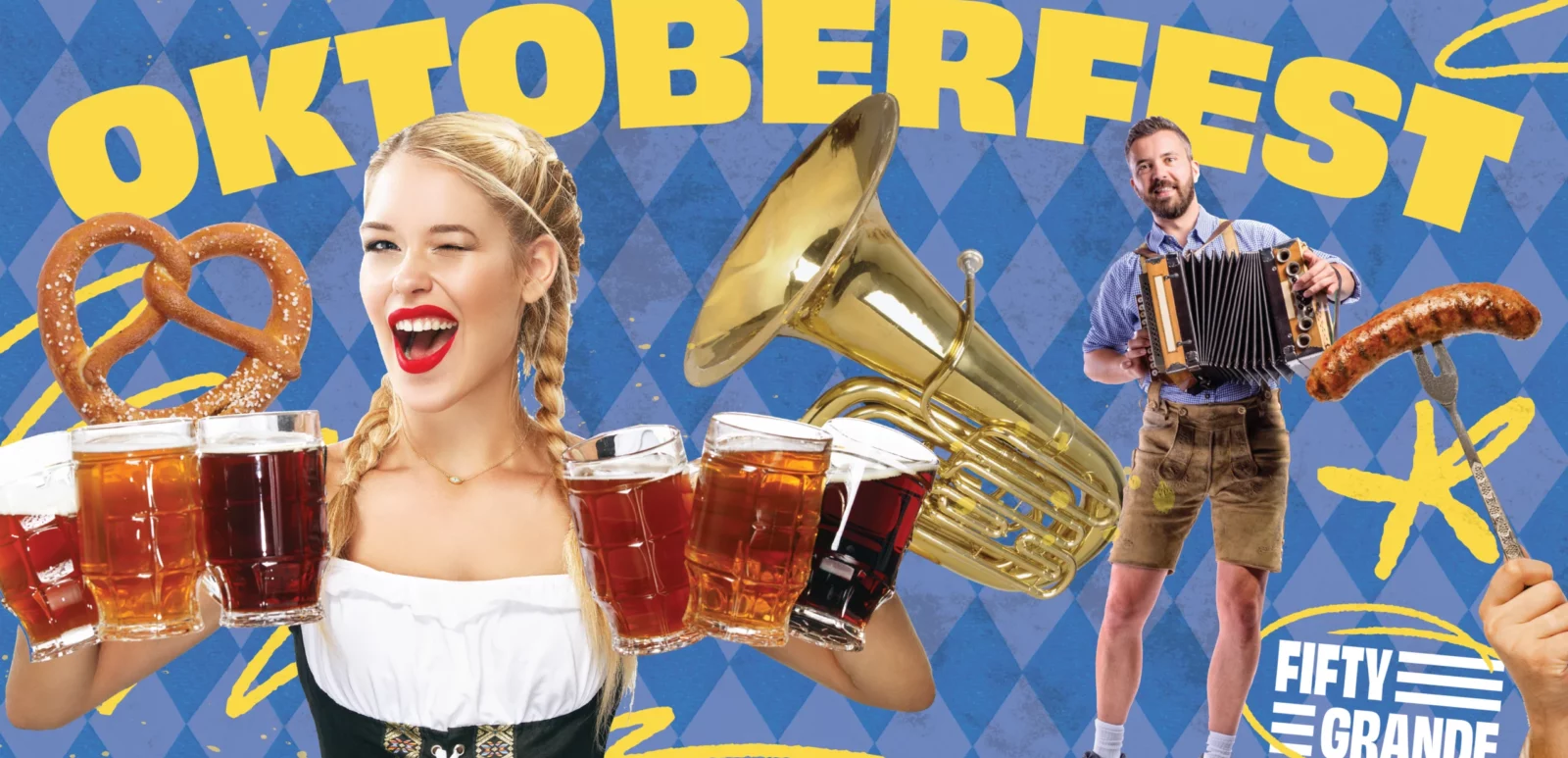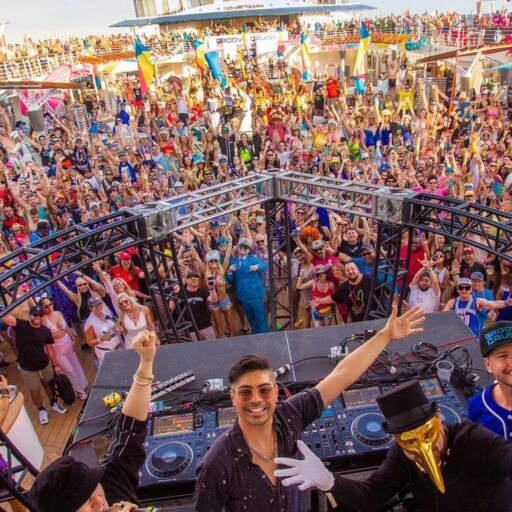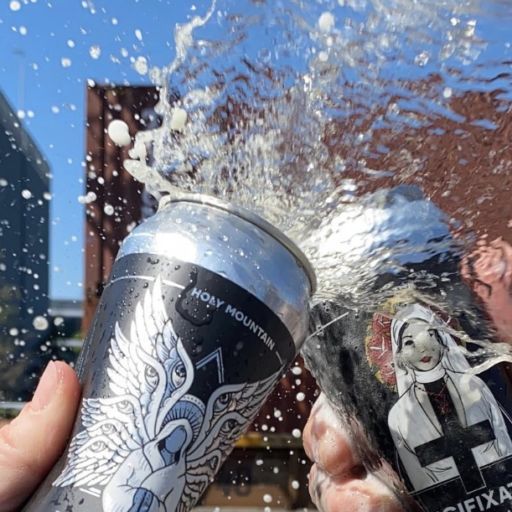“It’s almost time for the weiner race!” Bratwurst, notoriously, have no legs, so I was momentarily baffled when my friend blurted this out during our first Oktoberfest in Albany, N.Y. We were there to drink beer out of steins and consume pretzels sized to make us look like hobbits. As it turns out, we were also there to participate in an Oktoberfest tradition that, whatever its origins, felt like pure Americana: crowds of people cheered as a bunch of dachshunds, often in hot dog costumes, bounded 50 feet toward their crouched owners at the finish line. Their ears flapped behind them, their stubby legs carried them forward to glory.
This is Oktoberfest in America.
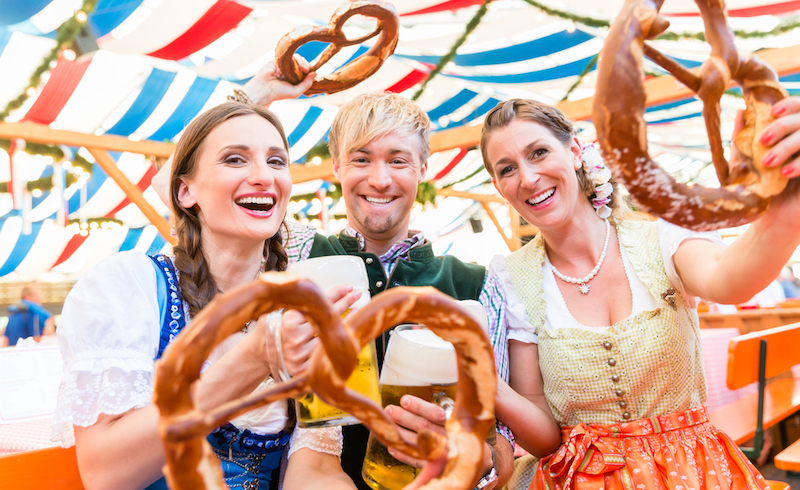
While an official list of Oktoberfests in the United States does not exist, it’s safe to say that there are hundreds of festivals across the country. Wikipedia lists 19 celebrations just in Texas, but ultimately admits defeat with a simple “many others” as its final bullet point. In contrast, Germany has only one Oktoberfest. The original. In Munich, from mid-September into October, millions of people don their lederhosen and dirndls and descend on Munich’s fairground, Theresienwiese, to drink beer, listen to folk music, watch parades and take a spin on some carnival rides. Across the United States, at tiny block parties and festivals whose attendance numbers dwarf the populations of the hosting towns, roughly the same number of Americans spend a Saturday afternoon getting their sip of stein. Whatever cultural lightning the Germans captured with the creation of Oktoberfest, Americans can’t get enough of it. Here are a couple of theories why, but in order to parse them out, we’re going to have to start in 19th-century Germany, or really, what had become the Kingdom of Bavaria in 1806.
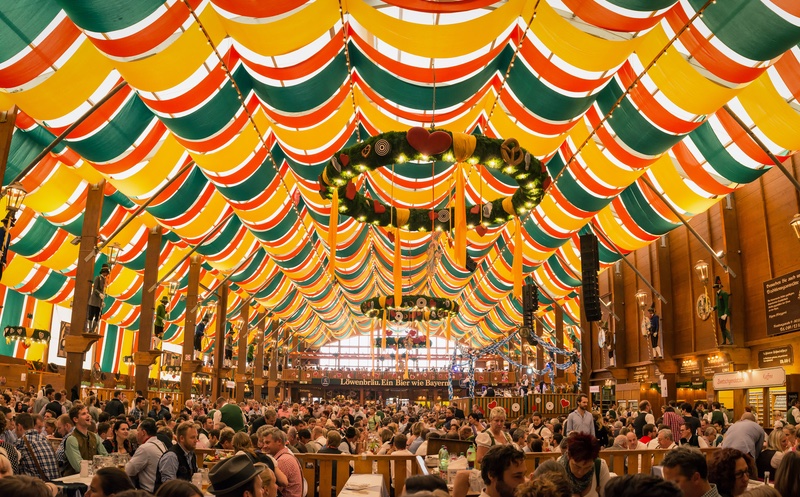
Oktoberfest, at its heart, is a party. In 1810, the crown prince of Bavaria, Ludwig, married Princess Therese of Saxony-Hildburghausen, and to appease some peasants and militiamen who had rebelled the previous year in favor of Austrian rule — and, you know, maintain monarchical power — they invited said peasants to celebrate their nuptials in Munich with a horse race. Let them watch horses and drink beer, as it were. It was a wild success, and the field where the event was held was promptly named Theresienwiese after the bride. In my imagination, after a day of drinking and yelling at horses, Prince Ludwig turned to Princess Therese and said, “Babe, that was so much fun, we should get married every year.” In reality, the Bavarian Agricultural Association recognized that the event was good for the local economy and decided to keep it going. Either way, Oktoberfest was born (if you’re concerned about the horses, don’t worry, they ended the races in 1960).
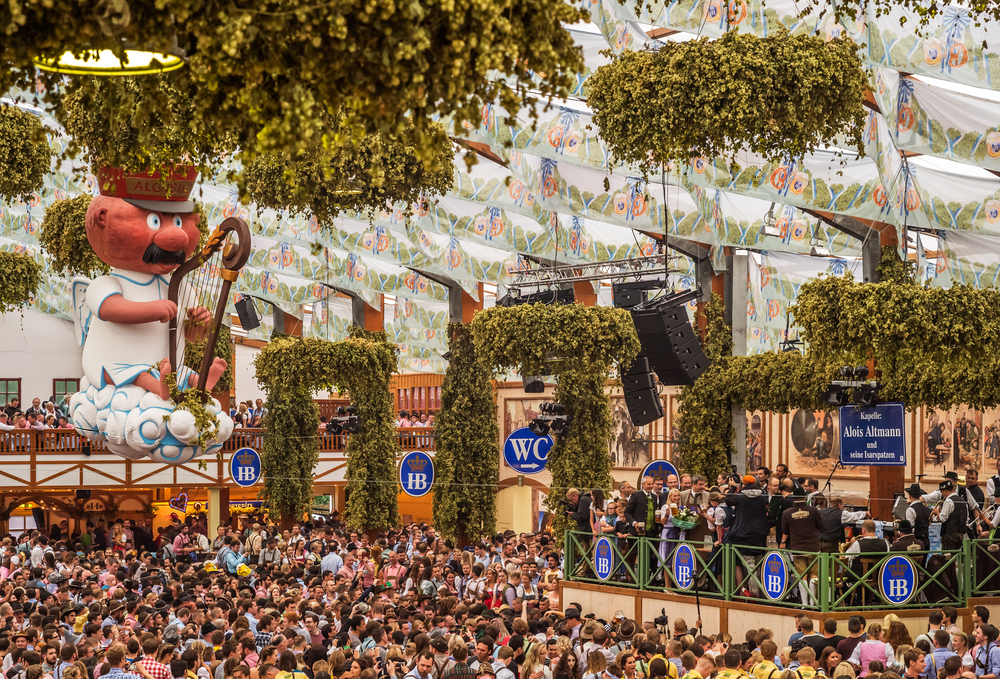
The story of how Oktoberfest got to the United States isn’t a straightforward tale of German immigrants bringing the party with them, although that’s a part of it. A huge wave of Germans immigrated to the U.S. in the second half of the 19th century. They largely settled in what became known as the “German Triangle” of the Midwest, an area anchored by Milwaukee, Cincinnati and St. Louis, as well as significant communities on the East Coast and in Texas. And they partied. Well, kind of — there were a lot of German singing festivals among immigrant communities, and they’re credited with bringing both lager recipes and the concept of a beer garden to America. Scholz Garten in Austin, Texas, the oldest beer garden in the United States, was established in 1866. But Oktoberfest? That didn’t happen until 1961.
The first Oktoberfest in the United States took place in La Crosse, Wis. And while the number of people in Wisconsin with German heritage might have laid the groundwork for Oktoberfest’s success, it was the good old-fashioned Chamber of Commerce that really brought it to life. In 1960, the Greater La Crosse Chamber of Commerce was looking for something to replace their annual Winter Carnival, which had gone defunct after the 1920s, in order to promote tourism and hometown pride for the city. The Chamber’s answer to this quandary was to team up with the German-owned G. Heileman Brewing Co. to put on an Oktoberfest. The local library’s online archives don’t detail exactly how they came to this decision (oh, to have been in the room where it happened), but this inception feels like one of the most “authentic” things about U.S. Oktoberfests. What is the Greater La Crosse Chamber of Commerce if not a modern American version of the Bavarian Agricultural Association?
Lest everyone in Texas get upset, it should be noted that 1961 was also the first year of Wurstfest in New Braunfels, Texas, which is essentially an Oktoberfest held in November with a special focus on sausage — another festival aimed at drawing attention to local vendors and bringing in tourists. In the following decades, Oktoberfests sprang up everywhere, especially in locations, such as Cincinnati, with large populations of people with German ancestry. Oktoberfest Zinzinnati was first held in 1976 and now attracts more than 700,000 attendees. Similarly, New Ulm, Minn., which hosts one of the United States’ most popular Oktoberfests, was originally settled by the German Land Co. of Chicago and has a monument to “Hermann the German,” who freed Germany from Rome back when Rome was a sprawling empire. However, I’d argue that there’s another element to the Oktoberfest zeitgeist that isn’t just about German culture. It’s also about fantasy.
In the second half of the 20th century, American companies, municipalities and organizations were investing in fantasy tourism experiences. Disneyland went up in 1955, followed by Disney World in 1971. The Renaissance Pleasure Faire of Southern California, a recreation of a 16th-century English market fair, first took place in 1963. In 1970, the first commercial witch shop opened up in Salem, Mass. While the plan to restore Colonial Williamsburg’s architecture might have been hatched in 1924, the practice of using men in tricorn hats and cravats as purveyors of history didn’t take off until the 1970s.

Maybe two of the most fascinating examples of this kind of investment in fantastical recreation are the small towns of Gatlinburg, Tenn., and Helen, Ga. Both towns have central shopping districts designed in the 1960s to resemble the architecture of German alpine towns. Neither town is telling a story about German immigration, but both currently host Oktoberfests. It brings tourists in. It’s fun. Oktoberfest in the United States is rooted in this universal truth of fantasy and historical tourism: spending money is more fun when there are costumes and games and spectacles.
The interplay of finance and fantasy is what cultural festivals and reenactments and fancy dress parties have always been about — even the primordial Oktoberfest. Beyond the wedding celebration, Oktoberfest was a way for the Bavarian royals to try to foster a feeling of belonging and build a cultural narrative (re: monarchical power) among their newly formed kingdom. The secret ingredient, though, is the way this mixed with a boost to the local economy and opportunities for vendors — there’s literally a parade of the tent “landlords” and brewers that has its roots in 1887 when one restaurant owner, a strongman known as the Bavarian Hercules, sought out an epic look-at-me moment and decided to parade his way to the festival with a brass band in tow.
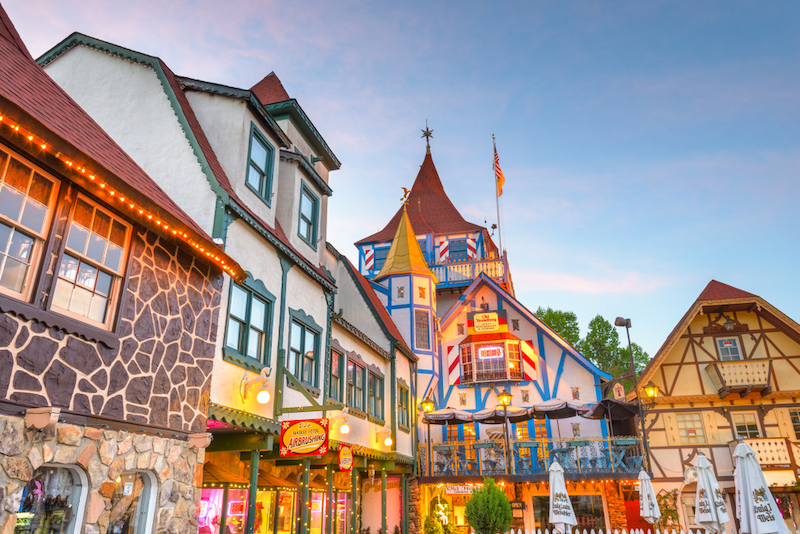
So of course Oktoberfest took off in America. After all, who mixes business and pleasure and devotion to over-the-top behavior better than America? Oktoberfests across the country pay homage to German heritage with stein-holding contests and keg tossing, but they also turn up the weird in a very American way. Take the chicken dance. The song goes back to a Swiss accordion player and composer who wrote it in the 1950s (then known as “Der Ententanz” or “The Duck Dance”). Over the following decades, the song was reproduced and became more popular worldwide. At the 1981 Tulsa Oktoberfest, a local television station provided a chicken costume to a dancer. The song played. A meme sensation was created and the rest is history. Now, the dance is a regular staple of American Oktoberfests. Oktoberfest Zinzinnati hosts the World’s Largest Chicken Dance where annually crowds of over 40,000 people wear chicken hats and “cluck cluck cluck” as one.
We go to Oktoberfests in the United States for a multitude of reasons. For a taste of German heritage. Because lederhosen and dirndls feel camp in the best way. We go for the kitsch. For the beer. The music. The chicken dance. To watch a bunch of tiny hounds in hot dog costumes compete to be the goodest boy. And so we salute you, Greater La Crosse Chamber of Commerce, for encouraging us to put on costumes and spend our money in the name of small businesses and local camaraderie. You’re American: you can’t help but love it.


